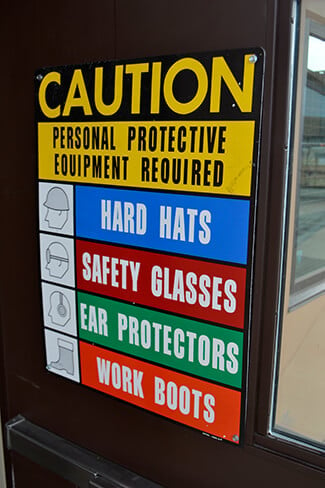New Burn Care Facility Focuses on Worker Recovery
03
February,
2023
2 MINUTE READ

Occupational burn injuries, though reportedly on the decline, remain a workplace safety concern. Scalds from a ruptured pipe and other burns are among the most painful injuries, and each year, thousands of burned workers in the United States require specialized medical care. The care and support these injured workers receive are key to their recovery and successful return to work, government officials and industry experts say.
In a new agreement, the Department of Labor & Industries and Harborview Medical Center in Washington have announced a Center of Excellence facility for medical care for burns where a range of specialists will collaborate on a worker's recovery.
"Getting the right care at the right time is crucial for these catastrophically injured workers," said Joel Sacks, director of the Department of Labor & Industries. "We hope to make their recovery better and a little easier by improving access to specialists."
Despite numerous safety measures and guidelines, burns continue to account for a considerable proportion of injuries in the workplace, roughly about 8% of all fire injuries. According to the National Center for Biotechnology Information, a report from the National Electronic Injury Surveillance System showed that, from 1999 to 2008, there were 1,132,000 nonfatal occupational burns treated in emergency rooms. Burn numbers and rates declined 40% over those 10 years. In 2008, men and younger workers 15?24 years old had the highest rates. Scalds and thermal burns accounted for more than 60% of burns. Industries including accommodation and food service, manufacturing, and construction had the highest number of burns.
"The new Center of Excellence for Burns will help us streamline multi-disciplinary care to Washington's workers who sustain devastating burns," said Nicole Gibran, director of Harborview Medical's Regional Burn Center. "By coordinating care with providers who understand burn injuries, we facilitate physical and psychological recovery."
Nearly 50 percent of adult burn patients in the U.S. do not return to work two years after injury and 28 percent never return to work. However, a recent study in the Journal of Burn Care & Research showed that 93 percent of workers with work-related burns who were treated at the Regional Burn Center returned to work on average 24 days after injury. These improved outcomes, the report attributes, result from the support the worker receives from employers and workers' compensation claims staff, and to the specialized and comprehensive burn care at Harborview.
In an effort to improve care for severely injured workers, the new center is the second center of excellence; the first, for amputations, was established in early 2016.

Ways to Prevent Occupational Burns
Follow rules: Enforce rules and safety techniques regularly. Employees should be aware of any new information or changes. Prevention is key.
Use caution: Take extra precaution near gas pipes, hot surfaces, and handling chemicals. Reaching across surfaces, transporting and dumping hot liquids can be dangerous.
Dress the part: Wearing the proper PPE and clothing can make all the difference. Clothes made with fire resistant materials, such as wool, are known for helping to prevent burns to the body. The proper gloves, shoes and eye protection should also be worn.
Prepare for the worst: Accidents do happen. Make sure your workplace has properly functioning fire-extinguishing equipment, first aid kits and eyewash stations. It is important that employees are aware of where safety stations are located in the event of an accident.
Pay attention: Be continually aware of surroundings and movements. Shortcuts and an unfocused mind can lead to fires or burns. Monitor every situation with a preventative mindset.
RELATED RESOURCES

Production Flies High at Valley Forge Flag
As a manufacturer and wholesaler of flags and banners, Valley Forge Flag has been in business for more than ...
Read
Fewer Injuries, More Accidental Deaths in 2017
According to government agencies, workplace injuries may be going down but accidents that are killing workers ...
Read
Oil & Gas Industry Taps into New Future of Safety
The future of the oil and gas industry is facing rampant change, and safety is part of the discussion. ...
Read.png)


